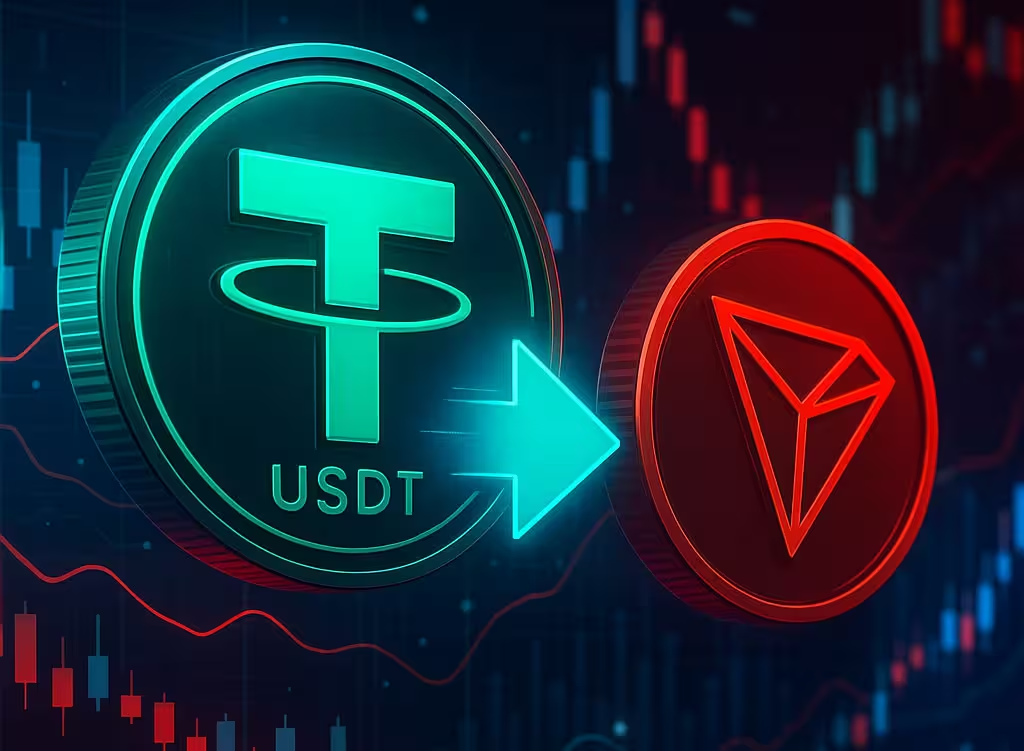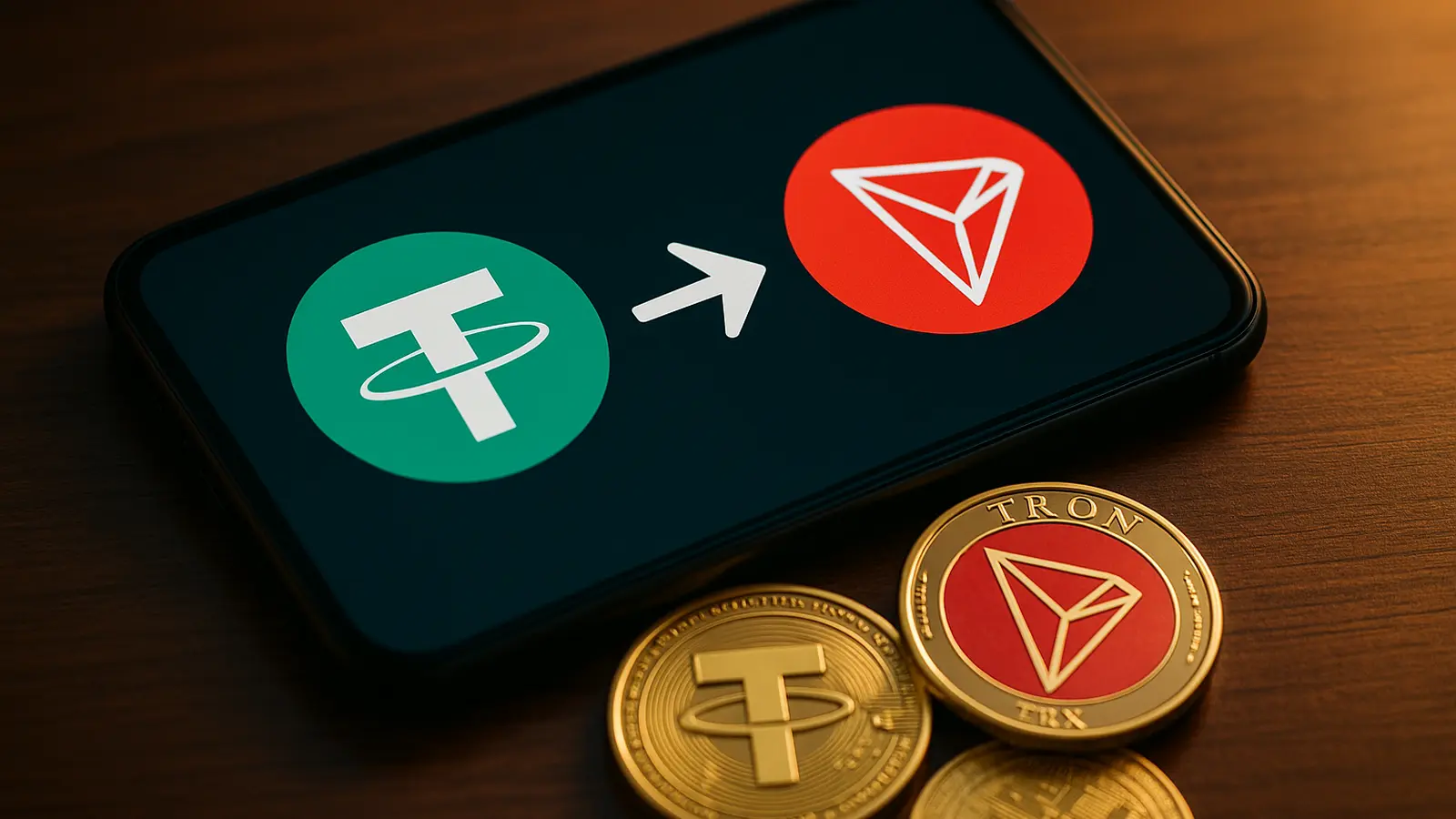11 Minutes
Why TRC20 USDT and Low Fees Matter
The rise of stablecoins transformed how value moves on blockchain networks. Tether (USDT) issued on Tron as the TRC20 token has become a go-to choice for fast, low-cost transfers, remittances, and exchange liquidity. But while Tron was built to be inexpensive, TRC20 token transfers still interact with smart-contract logic and can consume network resources—typically paid in TRX—unless you optimize how you pay for or obtain those resources. This article explains practical, safe, and actionable ways to minimize or even eliminate on-chain fees when sending USDT on the Tron network.
Background and Context: How Tron’s Resource Model Works
Tron’s architecture differs from Ethereum’s gas model. Instead of only paying gas to miners/validators at each transaction, Tron introduces two types of resources: bandwidth and energy. These resources are used to cover transaction costs:
Bandwidth
Bandwidth is consumed primarily by simple TRX transfers and some light operations. The network grants a daily quota of free bandwidth for each account to support small, routine transactions without spending TRX.
Energy
Energy is required when interacting with smart contracts. Because TRC20 USDT transfers are smart-contract interactions, they generally consume energy. If an account does not hold enough energy, the network will automatically deduct TRX as a fee to cover the required energy.
There are two ways to obtain resources: pay TRX per transaction or acquire resources by freezing TRX (staking). Freezing TRX grants bandwidth or energy for a limited period. Wallets and service providers can also subsidize energy or bandwidth on behalf of users in some scenarios.

Why Reducing TRC20 Transfer Fees Matters
Lowering the cost of USDT transfers on Tron has several practical implications:
- Lower friction for remittances, micropayments, and cross-border transfers.
- Reduced arbitrage costs for traders operating across exchanges.
- Enable cost-effective DeFi interactions and on-chain strategies.
- Better user experience and adoption in payments and dApps.
For institutional and retail users who move funds frequently, even small reductions in per-transfer fees compound into significant savings over time.
Primary Strategies to Minimize TRC20 USDT Transfer Fees
Below are multiple, complementary approaches—ranging from simple practical tactics to more technical solutions—that help you minimize TRC20 transfer costs.
1. Freeze TRX to Obtain Bandwidth and Energy
Freezing (staking) TRX is the canonical method to obtain free resources on Tron. You can freeze TRX for bandwidth or freeze for energy (depending on wallet UI) and receive resource credits for a fixed period.
- If you make frequent TRC20 transfers, freezing TRX for energy usually pays off. Instead of paying per-transaction TRX fees, you invest TRX to get a pool of energy that covers many transfers.
- Bandwidth is typically used up by simple transfers; because TRC20 is a smart contract, it relies mostly on energy, not bandwidth. Still, freezing for bandwidth can be useful for other account operations.
- Most wallets show an estimate of how many transactions your frozen TRX will cover. Use that estimate to calculate the break-even point.
Pros: predictable per-period cost, control over resource management, good for frequent users. Cons: opportunity cost (TRX is locked for an unfreeze period, usually 3 days), exposure to TRX price volatility.
2. Use Centralized Exchanges and Off-Chain Transfers for Frequent Moves
If you’re moving USDT between accounts on the same exchange (or between accounts that support internal transfers), use the exchange’s internal ledger transfers, which are typically free or very cheap. Many users funnel funds on-ramps and off-ramps via exchanges to avoid on-chain fees entirely.
Pros: near-zero fees, immediate settlement inside exchange ledger, easy UX. Cons: counterparty/custodial risk, withdrawal fees when moving on-chain, KYC/AML constraints.
3. Use Wallets or Services That Sponsor Energy
Some wallets, infrastructure providers, and dApps sponsor energy on behalf of users as a business model or promotion. This can make token transfers effectively free for the user. Examples include wallet providers offering fee sponsorship for new customers or certain dApps covering gas for in-app transactions.
Pros: no TRX spending for the user; great onboarding tool. Cons: limited availability, possible rate-limiting, potential privacy concerns.
4. Batch Transfers and Consolidate Transactions
When sending USDT to many recipients, batch transfers can dramatically reduce the per-recipient resource consumption compared to sending individual transactions. Several smart contracts and services are designed to carry out batch token transfers in a single transaction.
Pros: significant per-recipient cost savings. Cons: requires trust in or auditing of the batching contract; batch transactions consume more energy overall, but less per recipient.
5. Use Relay/Meta-Transaction Services (Relayers)
Meta-transactions enable a relayer to submit transactions on behalf of a user, paying the network fees and possibly charging a small off-chain fee for the service. If the relayer subsidizes energy, the user's outlay is zero or minimal.
Pros: user-friendly, lowers friction for novice users. Cons: requires trust in the relayer; not universally supported; may add latency.
6. Choose the Right Wallet and Settings
Some wallets allow you to select how fees are paid or to preview energy estimates for TRC20 transfers. Always check the estimated energy consumption before sending. Use wallets known for accurate cost estimates (e.g., hardware wallets or reputable software wallets integrated with Tron nodes).
7. Leverage TRON Infrastructure Providers (Sponsored Nodes)
A number of service providers run nodes and offer developer or user infrastructures, sometimes providing sponsored RPC endpoints that can assist with lower-cost interactions. This is especially relevant for developers and high-volume users building on Tron.
Pros: convenience and potential cost savings for dApps. Cons: reliance on third parties; read their terms and privacy policies.
How to Decide Which Strategy Is Best
Your optimal approach depends on several variables:
- Frequency of transfers: If you move USDT daily or make many contract interactions, freezing TRX for energy likely reduces costs.
- Liquidity and custody preferences: If you trust exchanges and prioritize convenience, internal transfers may be the cheapest route.
- Risk tolerance: Freezing TRX exposes you to TRX price risk and a temporary locking period; using custodial services exposes you to counterparty risk.
- Technical ability: Developers and advanced users can deploy batching contracts or integrate relayers; casual users may prefer wallet-native sponsorship or freezing.
A pragmatic decision path: for occasional transfers, use exchange internal transfers or pay minimal TRX fees; for frequent transfers, calculate the break-even of freezing TRX for energy; for bulk distributions, use batching or relayers.

Practical Step-by-Step: Freezing TRX to Reduce TRC20 Fees
If you choose to freeze TRX to obtain energy, here’s a general workflow:
- Check your wallet for a “Freeze” or “Stake” option. Wallets will let you choose whether to freeze for bandwidth or energy.
- Pick an amount of TRX to freeze. Wallets often provide an estimate of how many energy units or transactions this will cover.
- Freeze TRX. Your account will receive resource credits immediately.
- Perform your TRC20 USDT transfer(s). The network will consume the energy credits rather than charging TRX per transaction.
- When you no longer need resources, unfreeze if desired—note the unfreeze delay (commonly a few days).
Always verify the specific freeze/unfreeze terms in your wallet or staking provider, and ensure you understand the minimum freeze amount and lock period.
Market Trends, Data, and the Bigger Picture
TRC20 USDT became popular largely because Tron offers high throughput and low latency, making it attractive for remittances and exchange liquidity. Over the past several years, Tron-hosted USDT gained adoption in regions where transaction cost sensitivity is high.
Key market trends to watch:
- Stablecoin demand: As crypto adoption and on-chain usage grow, demand for stable, low-fee rails for value transfer will remain high. TRC20's low-cost profile keeps it competitive against ERC20 during periods of high Ethereum congestion.
- Cross-chain dynamics: Bridges and wrapped tokens are enabling cross-chain liquidity, but bridge fees and security trade-offs can offset savings from cheap chain-native transfers.
- Infrastructure evolution: As dApps and wallets mature, more gas/energy sponsorship models and relayer services are likely to appear to lower the end-user friction.
Analysts also monitor how resource policies (e.g., changes to freezing mechanics or energy pricing) and network governance (Super Representatives) affect costs. Any material change to how resources are allocated could shift user behavior across chains.
Risks, Trade-offs, and Expert Insights
While cost reduction is attractive, it comes with trade-offs and risks:
- Counterparty risk: Centralized exchanges and custodial wallets reduce fees but introduce the risk of hacks, insolvency, or withdrawal limits.
- Opportunity cost: Freezing TRX locks capital and subjects you to TRX price risk for the unfreeze period. If TRX appreciates, the opportunity cost increases; if TRX drops, you face reduced asset value.
- Smart contract risk: Batch transfer contracts or third-party relayers must be audited; bugs can result in lost tokens.
- Centralization concerns: Tron’s consensus and governance structure—Super Representatives and foundation-led infrastructure—raise questions about centralization for some users. This is a broader ecosystem-angle to weigh against cost benefits.
Expert takeaways:
- For high-frequency traders and services, freezing TRX for energy is usually the most efficient long-term approach.
- Casual users should prefer exchange internal transfers or sponsor-enabled wallets when available to avoid on-chain friction.
- Developers should design dApps to optionally sponsor gas/energy for users, improving UX and adoption.
Impact on Investors and the Global Crypto Scene
Lower transfer costs on Tron have ripple effects:
- Market efficiency: Reduced friction favors arbitrage between exchanges and across geographic regions, improving market efficiency.
- Financial inclusion: Low-fee stablecoin rails make crypto-based remittances and micropayments more viable, particularly in emerging markets.
- Competition: Tron’s low-cost model pressures other chains and Layer 2s to optimize fees and UX, driving broader innovation.
- Business models: Payment processors, remittance platforms, and dApps can build products that rely on low per-transaction costs, unlocking new revenue models.
From an investor perspective, understanding how resource costs work on Tron helps manage operational budgets, hedging strategies, and platform selection for on-chain activities.
Checklist: How to Minimize TRC20 USDT Fees Right Now
- If you rarely send USDT: use centralized exchange internal transfers to avoid on-chain fees.
- If you frequently send USDT: freeze TRX for energy and compute how many transfers that freeze will cover.
- For bulk distributions: use reputable batching contracts or services that amortize costs.
- For one-off or small transfers: check wallets that sponsor energy or use meta-transaction providers.
- Always check estimated energy consumption in your wallet before confirming a transfer.
- Factor in operational risks and the unfreeze delay when freezing TRX.
Conclusion: Practical Savings and Smart Workflows
Sending USDT on Tron (TRC20) can be effectively free or extremely low-cost if you adopt the right mix of strategies. Freezing TRX for energy is the canonical long-term approach for frequent users, while exchanges and sponsored wallets provide easy short-term or occasional solutions. Batch transactions, relayer models, and careful wallet selection further reduce costs. As the broader crypto ecosystem evolves, expect more user-focused models—such as fee sponsorship and meta-transactions—to make token transfers even cheaper and more accessible.
Finally, always weigh cost savings against custody and smart contract risks. Optimize fees, but don’t compromise on security: audit any contract you interact with, use reputable wallets, and treat frozen TRX as committed capital for the lock period.
By understanding Tron’s resource model and applying the tactics above, you can consistently minimize TRC20 USDT transfer costs while maintaining operational safety and efficiency.


Leave a Comment